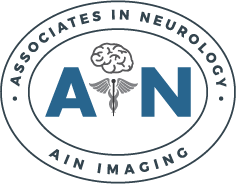
In short,
- Physical therapy can significantly reduce muscle spasm frequency and intensity.
- Various techniques exist, tailored to the spasm’s cause and location.
- Early intervention offers better long-term outcomes for chronic spasms.
Finding effective chronic muscle spasm treatment can greatly improve your quality of life. Muscle spasms are involuntary contractions that can cause pain, tightness, and restricted movement. They may result from dehydration, electrolyte imbalances, or conditions such as multiple sclerosis or cerebral palsy.
This guide explains how physical therapy helps manage and prevent chronic spasms safely and effectively.
At Associates in Neurology, our experienced physical therapists specialize in evidence-based methods to reduce pain, improve flexibility, and restore mobility for patients experiencing chronic muscle spasms.
Understanding Muscle Spasms and Their Causes
Muscle spasms—also called cramps—are sudden, involuntary contractions of one or more muscles. They can range from mild twitches to intense, lasting pain. According to MedlinePlus, common causes include dehydration, electrolyte imbalance, nerve compression, or muscle fatigue.
Dehydration disrupts the body’s fluid balance, while low levels of potassium, magnesium, or calcium interfere with nerve communication. Overuse or repetitive movement can lead to fatigue and the accumulation of lactic acid, increasing spasm frequency. In other cases, conditions such as multiple sclerosis (MS) or cerebral palsy may cause chronic spasms that require ongoing care.
How Physical Therapy Can Help Relieve Muscle Spasms
Physical therapy plays a vital role in chronic muscle spasm treatment, addressing both the symptoms and underlying causes.
Manual Therapy
Manual therapy involves hands-on techniques to release muscle tension and improve circulation. According to the Mayo Clinic, massage therapy, myofascial release, and joint mobilization can help restore normal muscle function and reduce pain.
- Massage therapy to relieve tight muscles.
- Myofascial release to address trigger points.
- Joint mobilization to improve movement.
Therapeutic Exercises
Exercises designed by a physical therapist help strengthen weak muscles, improve flexibility, and prevent future spasms. The Centers for Disease Control and Prevention (CDC) highlights the importance of stretching and strength training for musculoskeletal health.
- Stretching to lengthen tight muscles
- Strengthening to improve endurance and balance
- Range-of-motion exercises to prevent stiffness
Modalities
Physical therapists often use heat, cold, ultrasound, or electrical stimulation to manage pain. The NIH notes that these modalities promote healing and relaxation.
- Heat therapy: Relaxes muscles and boosts blood flow.
- Cold therapy: Reduces inflammation and soreness.
- Electrical stimulation (TENS): Blocks pain signals to the brain.
These tools provide short-term relief and complement long-term physical therapy goals.
Cerebral Palsy Treatment and Spasm Management
For individuals with cerebral palsy or neurological disorders, managing chronic spasms is essential for maintaining independence and mobility. Targeted physical therapy can reduce stiffness, enhance movement, and prevent contractures.
Techniques may include:
- Exercises to improve muscle coordination.
- Orthotics for proper limb support.
- Spasticity management strategies like stretching and positioning.
With consistent therapy, patients often experience better function, reduced pain, and greater comfort in daily activities.
Tips for Managing Muscle Spasms
- Stay Hydrated: Drink plenty of water throughout the day to prevent dehydration-related spasms. Aim for at least eight glasses of water daily.
- Maintain Electrolyte Balance: Consume foods rich in potassium, magnesium, and calcium, or consider supplements under medical guidance. Bananas, spinach, and dairy products are good sources of these electrolytes.
- Stretch Regularly: Incorporate stretching exercises into your daily routine, focusing on muscles prone to spasms. Hold each stretch for at least 30 seconds.
- Manage Stress: Practice relaxation techniques such as deep breathing or meditation to reduce stress-related muscle tension. Stress can exacerbate muscle spasms.
- Proper Posture: Maintain proper posture while sitting and standing to avoid muscle strain. Use ergonomic chairs and adjust your workstation to promote good posture.
When to Seek Professional Care
Consult a healthcare provider if your spasms are frequent, severe, or affecting your daily routine. Persistent spasms may indicate nerve compression or underlying medical conditions that require attention.
Seek immediate medical care if you experience:
- Weakness or numbness
- Severe or sudden pain
- Loss of bladder or bowel control
Prompt evaluation helps ensure you receive the appropriate chronic muscle spasm treatment plan before symptoms worsen.
Chronic Muscle Spasm Treatment in Novi, MI
If muscle spasms are limiting your mobility or comfort, Associates in Neurology provides personalized chronic muscle spasm treatment. Our licensed physical therapists use a combination of manual therapy, targeted exercise, and therapeutic modalities to relieve pain and restore function.
We focus on long-term relief through education, movement, and prevention—helping you regain strength, confidence, and control over your daily life.
Call (248) 478-5512 or use our online appointment request form to schedule your consultation. Discover how professional physical therapy can help you find lasting relief through expert-guided chronic muscle spasm treatment at Associates in Neurology.
Sources


